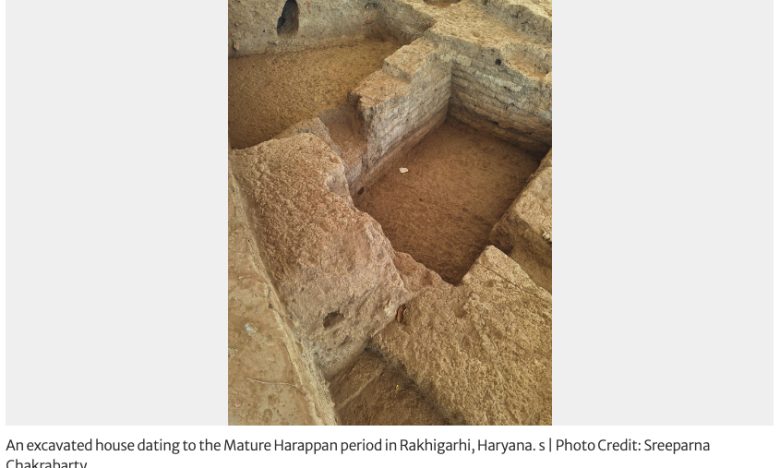INDIA, May 7, 2024 (The Hindu): Roughly 93 miles from Delhi, the national capital, down the Delhi-Sirsa highway, a meandering road leads to the twin villages of Rakhi Shahpur and Rakhi Khas in Haryana’s Hissar district. The narrow, dusty road, typical of small-town India, belies the importance of the place to which it leads — the archaeological site of Rakhigarhi. A plaque here reads that it is the largest site of the Harappan culture. Ninety-nine years after it was discovered, the findings have raised questions about history and identity. Mound 7 of the excavation site, that extends across 865 acres, has been identified as a burial plot from which 56 skeletons were recovered. Of these, a woman, roughly 4,600 years old, has created a buzz among those who work in history, anthropology, genomics, and linguistics. The DNA analysis of the skeleton says “the individual we sequenced fits as a mixture of people related to ancient Iranians (the largest component) and Southeast Asian hunter-gatherers”, as per Cell. It also says that there was no Steppe Pastoral gene (from people in Central Asia) in the Rakhigarhi woman.
The word Aryan has been interchangeably used for the Steppe Pastoralists (since we cannot say any time frame), though to avoid racial connotations many scholars now prefer to use the term Indo-Aryan for this group of people. This finding has fanned the debate on the so-called Aryan migration to India, part of the history books of many generations of Indians. Quickly, the body that oversees educational aids, the National Council of Educational Research and Training (NCERT), sent out a document to incorporate the developments in the next academic year’s Class 12 History textbook Themes in India History Part – I under the chapter Bricks, Beads and Bones – The Harappan Civilisation. “The DNA of the Harappans has continued till today and a majority of the South Asian population appear to be their descendants. Due to trade and cultural contacts of the Harappans with distant regions, there is a mixture of genes in small quantities. The continuity without any break in genetic history as well as cultural history rules out large-scale immigration of the so-called Aryans,” the NCERT textbook aimed for 2024-25, has stated.
Much more of this discussion, with differing opinions among scientists, at source.
https://www.thehindu.com/news/national/the-4600-year-old-woman-from-rakhigarhi/article68132364.ece
A daily summary of world news for Hindus and non-Hindus alike

